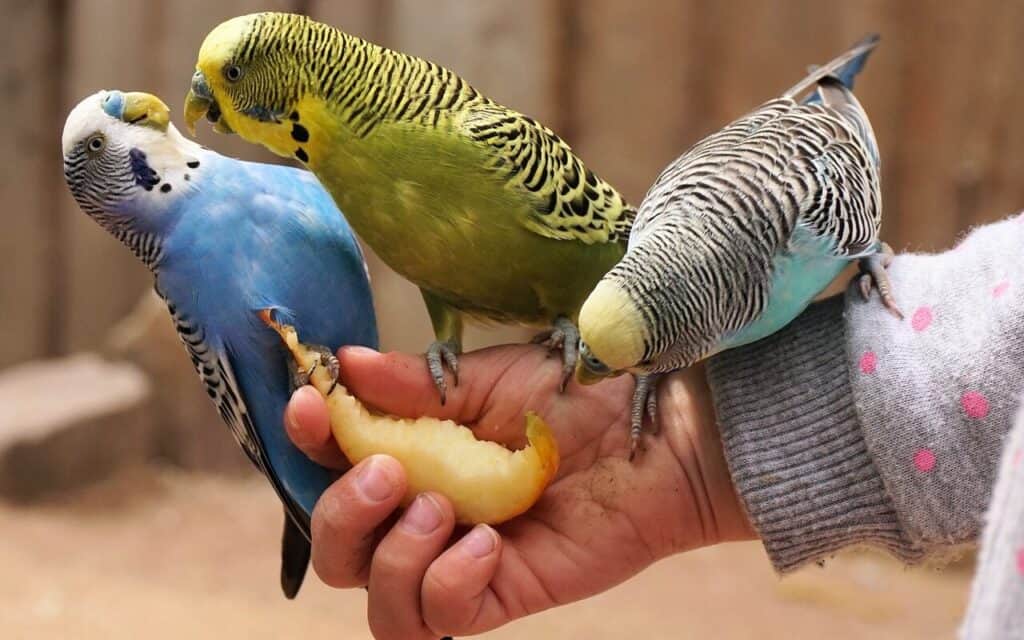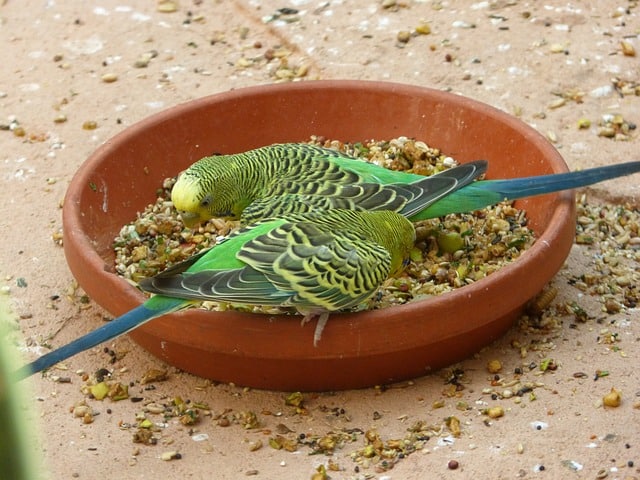Are you curious about how to determine the gender of your budgie? Understanding the distinctions between male and female budgies can be an exciting and crucial aspect of caring for these charming birds. In this article, we will explore the topic of male and female budgie cere, also known as the nasal area, and provide you with a comprehensive gender chart to help you identify the sex of your feathered friends.
What is Budgie Cere?
Before diving into the gender differences, let’s begin by understanding what the budgie cere is. The cere is the fleshy area located just above the beak where the nostrils are found. It acts as a protective covering for the nasal openings and is also involved in temperature regulation and scent detection.
The budgie cere serves as a significant physical feature in budgerigars, aiding in gender identification. Located above the beak, this area is comprised of specialized tissue housing the bird’s nostrils. The cere’s appearance and characteristics vary between male and female budgerigars and evolve as they mature.
Male Budgie Cere
Male budgies typically have a bluish or purplish cere. The coloration intensifies as they mature into adulthood. Young male budgies may have a slightly pinkish or whitish cere, but it usually transitions to the characteristic blue or purple hue after a few months. The color change is a reliable indicator of their gender.
As male budgies reach sexual maturity, their cere color deepens and becomes more vibrant. The blue or purple shade becomes more prominent, making it easier to distinguish them from females. It is important to note that some male budgies may have cere color variations, and in rare cases, their cere may remain pink or whitish even in adulthood. However, the majority of male budgies will display the typical bluish or purplish cere color.
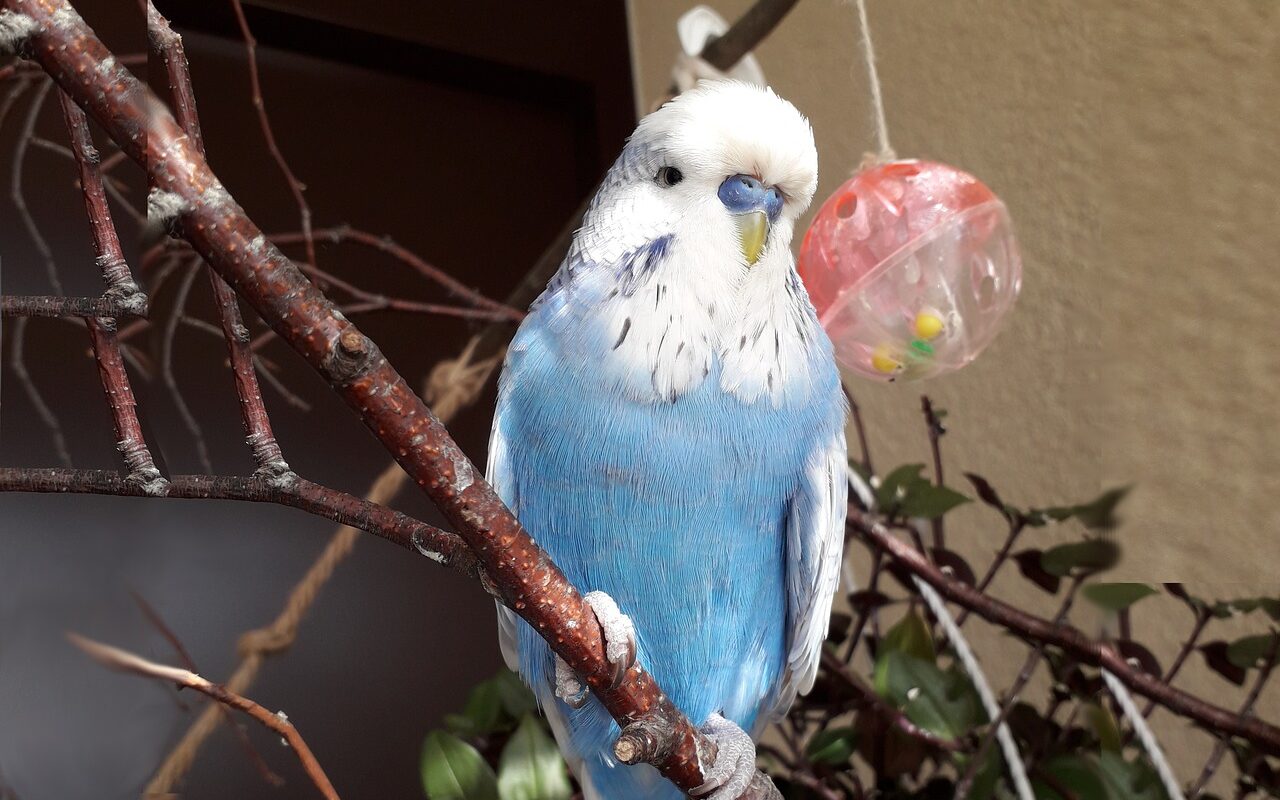
Female Budgie Cere
Female budgies have different cere colors depending on their age and breeding condition. Immature female budgies generally have a pink or light purple cere, similar to the color of their skin. As they approach sexual maturity, the cere color undergoes changes. Adult female budgies usually develop a brown or tan cere, which may become crusty during the breeding season.
Determining the gender of a female budgie can be slightly more challenging than with males due to the variations in cere color. Unlike male budgies, the cere color of female budgies is not as straightforward in indicating their gender. The transition from a pink or light purple cere to a brown or tan cere can be gradual, and some females may have a combination of colors during different stages of maturity.
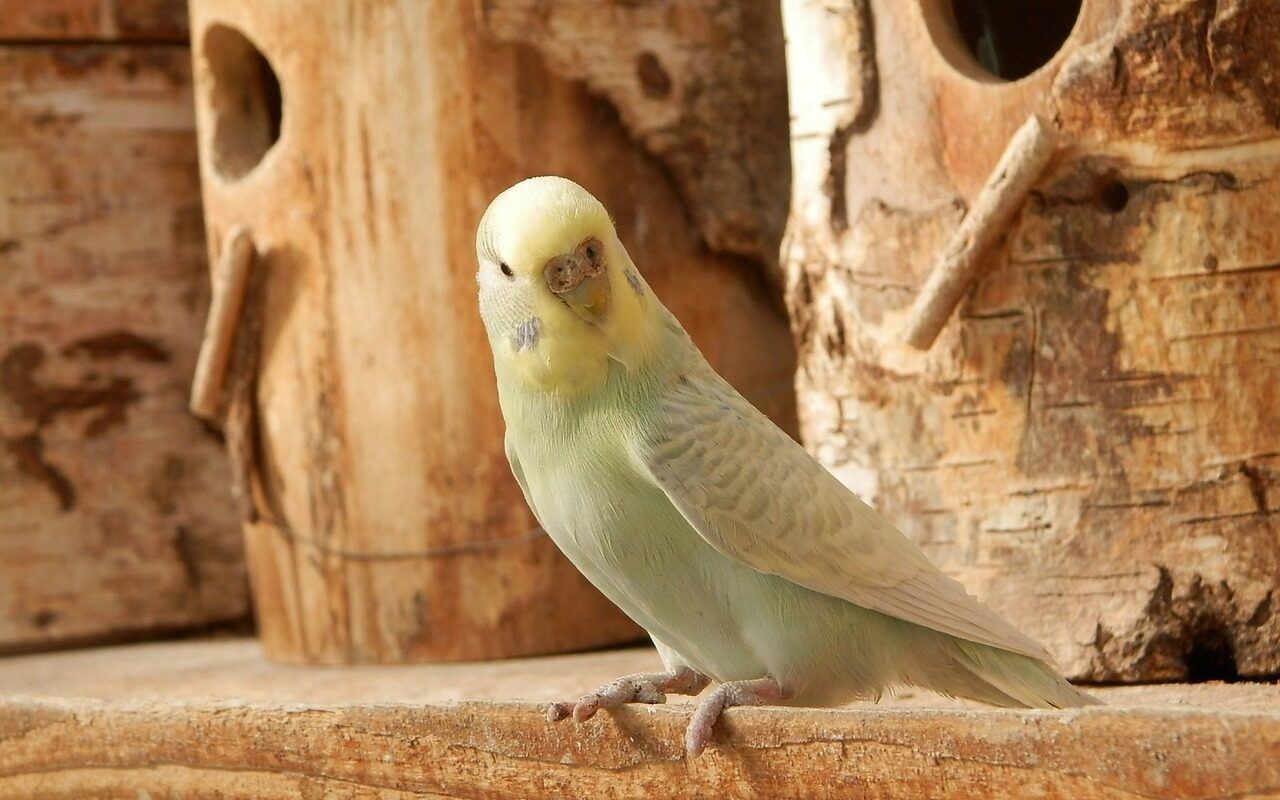
Baby Budgie Cere
When baby budgerigars hatch, their cere appears as a soft, purplish-pink color, regardless of their eventual gender. This initial stage presents a challenge in determining their gender accurately, as the cere color lacks the distinctive hues seen in matured budgies.
As the chicks grow, typically reaching around 3 to 4 months old, their cere begins to undergo changes, transitioning into more distinguishable colorations based on their gender. Male budgerigars’ ceres gradually transform into vivid shades of blue or purplish-blue, marking the progression towards maturity and confirming their male identity.
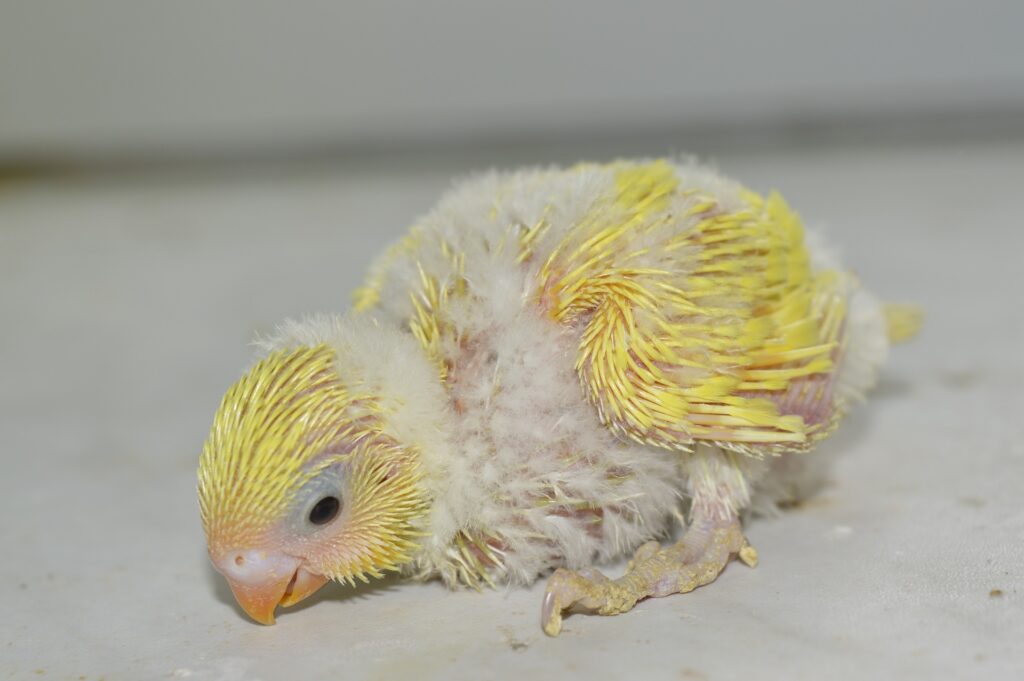
Changes in female budgie cere
According to Bird Vet Melbourne, hormonal changes during the breeding cycle are responsible for changes in female budgie cere
1. Adolescent Stage
Young female budgies have pink or purplish ceres during their early stages of development. This coloration can be attributed to hormonal changes as they reach sexual maturity.
2. Non-breeding or Resting Phase
When the breeding cycle ends or the budgie is not in the reproductive phase, the cere’s color gradually reverts to a lighter shade, often resembling the coloration seen during adolescence.
3. Breeding Condition
When a female budgie reaches breeding condition, usually around 8 to 12 months of age, her cere undergoes significant changes. It transforms into a brownish or tan color with a crusty texture.
4. Egg-laying Period
During the egg-laying period, which occurs if the budgie has mated successfully, the cere turns darker in color. It can range from dark brown to a deep chocolate hue.
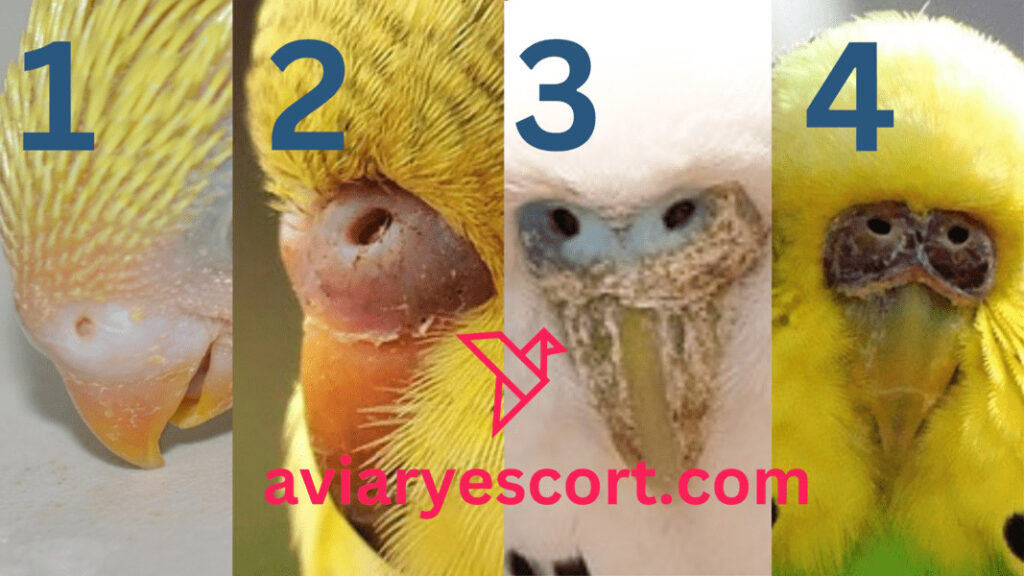
Gender Chart: Determining Budgie Gender
To help you accurately determine the gender of your budgie, refer to the following gender chart:
Budgie Gender Chart
Using this chart, you can compare your budgie’s cere color to the corresponding categories and determine its gender. Remember, it’s essential to consider both the color and the stage of maturity to make an accurate assessment.
| Age/Stage | Male Budgie Cere | Female Budgie Cere |
|---|---|---|
| Juvenile | Pinkish-purple | Pale pink or whitish |
| Adolescent | Bright blue or purplish-blue | Light blue or tan |
| Adult – Mature | Royal blue or deep blue | Light brown, beige, or tan |
| Breeding Season | Dark blue or dark purplish-brown | Brown or crusty brown |
| Older Age | May fade in color, become less vibrant | May become chalky or crusty |
Please note that these descriptions are general and may vary between individual budgies. Additionally, some mutations in budgies can affect cere coloration.
Male Female Behavioral Differences
In addition to cere color, there are other behavioral differences between male and female budgies that can help you determine their gender. While these behavioral traits are not foolproof indicators, they can provide additional clues.
a) Singing and Vocalization
Male budgies are known for their melodious singing. They have a broader repertoire of songs and tend to vocalize more frequently compared to females. However, some female budgies can also exhibit singing behavior, albeit to a lesser extent.
b) Courtship and Head-Bobbing
Male budgies often engage in courtship displays to attract females. They may bob their heads up and down, regurgitate food, and exhibit other mating behaviors. Females, on the other hand, are usually less active in initiating courtship behavior.
c) Nesting and Egg-Laying
Female budgies have the ability to lay eggs. If you notice your budgie showing nesting behavior, such as seeking out dark and secluded areas, shredding paper or other materials, and spending a significant amount of time in the nesting box, it is likely a female.
d) Aggression and Territory
Male budgies can be more territorial and aggressive compared to females. They may display dominance behaviors, such as wing flapping, beak grinding, and even biting, to establish their territory or protect their mates.
Remember that individual budgies may exhibit variations in behavior, and relying solely on behavior to determine gender is not always accurate. It is best to consider a combination of behavioral traits and cere color to make an informed assessment.
Importance of Accurate Gender Identification in Budgies
Accurately identifying the gender of budgerigars holds significant importance for both enthusiasts and breeders, playing a crucial role in various aspects of their care, breeding, and social interactions.
a) Breeding Programs
In breeding programs, precise gender identification is fundamental for pairing budgies to ensure successful breeding outcomes. Pairing compatible male and female budgies based on their gender prevents mismatches and promotes healthy breeding practices, contributing to the production of robust and genetically diverse offspring.
b) Understanding Behavior
Knowledge of a budgie’s gender aids in comprehending and interpreting their behaviors. Male and female budgerigars may exhibit distinct behavioral patterns, such as vocalizations, courtship behaviors, or nurturing tendencies. Understanding these gender-specific behaviors fosters better interactions and bonding between budgies and their human companions.
c) Health Monitoring
Accurate gender identification assists in monitoring the health and well-being of budgerigars. Certain health issues or conditions might manifest differently between male and female birds. Knowing the bird’s gender aids in identifying and addressing potential health concerns more effectively.
d) Social Dynamics
Gender plays a role in the social dynamics of budgerigars. Understanding the gender makeup within a group or aviary setting allows for a better understanding of social hierarchies, interactions, and dynamics among male and female budgies, contributing to a harmonious environment.
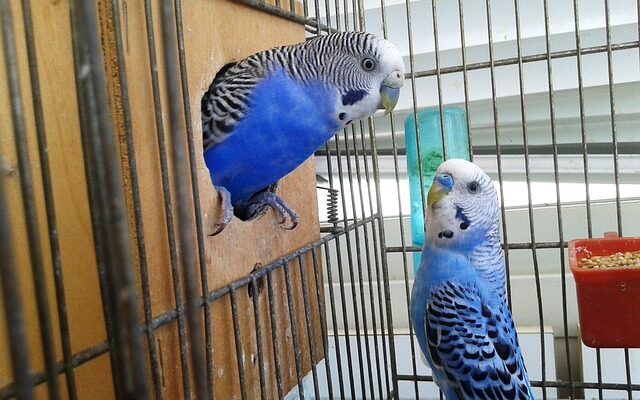
Conclusion
Understanding the male and female budgie cere is crucial for any budgie owner. By closely observing the coloration of the cere, you can confidently identify the gender of your feathered companion. Remember that individual variations may exist, and consulting an avian veterinarian is advisable for confirmation if you are unsure. With this knowledge, you can better care for your budgies and provide them with an enriched and comfortable environment.
Read more! Budgie Diet: List of Healthy Foods for Parakeets
FAQs
1: Can a male budgie ever have a pink cere?
A: No, pink cere is characteristic of immature or adult female budgies.
2: How long does it take for a budgie’s cere color to change?
A: It typically takes a few months for the cere color to fully develop and indicate the bird’s gender.
3: Are there any other ways to determine the gender of budgies?
A: While cere color is a reliable indicator, DNA testing can provide definitive results if needed.
4: Can the cere color of a budgie change after maturity?
A: No, once a budgie reaches maturity, the cere color remains relatively stable.
5: Do all budgies follow the same color pattern for cere?
A: While the gender chart provides general guidelines, individual budgies may exhibit slight variations.
6: How can I provide a comfortable environment for my budgies based on their gender?
A: Understanding the gender of your budgies helps you meet their specific needs, such as appropriate diet, socialization, and nesting opportunities.
7: Is it possible for female budgies to have a blue cere?
A: While it is rare, some female budgies may have a blue cere due to certain genetic factors.
8: Can the cere color change due to health issues?
A: Yes, certain health conditions or hormonal imbalances can affect the cere color of budgies. If you notice any abnormal changes, it is recommended to consult an avian veterinarian.
9: Can I rely solely on cere color to determine the gender of my budgies?
A: While cere color is a good initial indicator, it is always beneficial to consult a professional avian veterinarian for a comprehensive assessment.
10: Are there any other physical characteristics that can help in gender identification?
A: In addition to cere color, some subtle differences in body size, behavior, and feather patterns may provide additional clues to determine the gender of budgies.
Read more! How to Tell The Gender of a Budgie? | Determine The Sex of a Budgie



